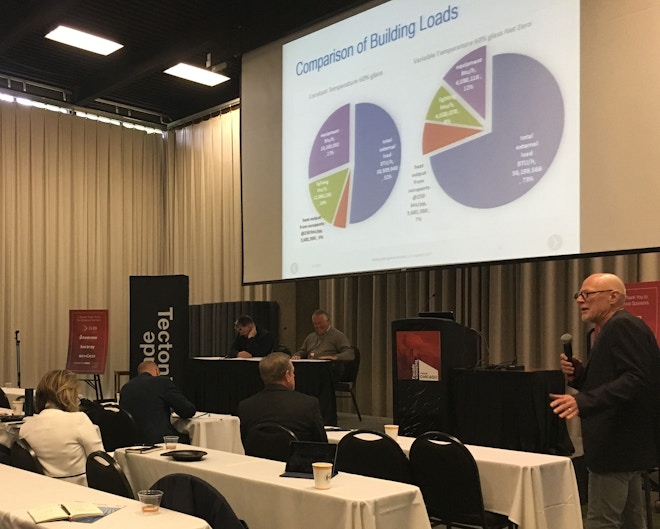Check out our upcoming events for updates and further information on these and other FTI events.
Recap – Facade Tectonics Forum: CHICAGO
<p>May 23, 2017 at Hermann Hall on the IIT Campus in Chicago, IL</p>
Attendee survey results are in for the recent Facade Tectonics Forum: CHICAGO with 100% reporting they will attend another event and recommend FTI events to others, and 96% reporting that speakers and presentations met or exceeded expectations. In addition, 96% indicated leaving the event with new knowledge to apply to their practice. “These are phenomenal results,” commented Mic Patterson, the Facade Tectonics Institute Ambassador of Innovation & Collaboration, “It’s hard to improve on these numbers. We’ve consistently polled high with our outreach events, but we are always looking for opportunities to improve. The survey results provide critical feedback for us.” Patterson, also the Director of Strategic Development for Schüco USA, co-chaired the event with Chris Drew, Director of Sustainability at local architecture firm AS+GG.
Under appropriately blustery gray skies, members of the building facade community converged at Hermann Hall on the Illinois Institute of Technology campus to participate in the latest Forum event assembled by the Institute, a half-day program, themed:
Windy City Skins: Building Facades where the Hawk Wind Blows
The program was comprised of three sessions: The Talk, The Walk, and The Hawk, each comprised of 2-3 speakers providing brief presentations followed by vigorous Q&A.
The Talk
A performance design focused session comprised of presentations by Stephen Ray of SOM; Mark Chiu of Thornton Tomasetti; and Mark Van Dalen with CLEB. This session reviewed various state-of-the-art performance related findings and practices, including surprising data evidencing apparent limits to the value of adding insulation to the building envelope, in the form of diminishing returns as insulation thickness is increased beyond a certain threshold. The “frame-effect” emerged as a dominant talking point; as glazing products have yielded significant performance enhancements over recent years, curtainwall framing systems have emerged as a significant concern with respect to thermal performance, air and water infiltration.
The Walk
A facade delivery focused session using the nearly completed 27-story Manulife Place in Calgary as a case study. The facade geometry includes both concave and convex surfaces, canted in elevation, and features curved triple-glazed high-performance insulating glass integrated into a unitized curtainwall system. Session speakers were Lucas Tryggestad with architect SOM, Rolando Cano with facade contractor CGI, and Brad Groenenboom with facade system supplier Schüco USA. The session focus was digital workflows, emphasizing the dynamic nature of the facade design and delivery process for large scale complex facade programs. The critical importance of early involvement of the key team players was discussed, along with the role of tools and processes to facilitate communication and data management throughout the design and build process.
The Hawk
And finally, The Hawk (Chicagoans know the infamous wind blowing in from Lake Michigan as the Hawk.)

A session focused on wind-effects on tall buildings. Russell Gilchrist with Gensler and Peter Simmonds with Building and System Analytics brought attention to the unique effects characteristic of tall building, bringing into question the way these winds are accounted for in current practice. Gilchrist and Simmonds have collaborated on several milestone projects in the past, such as the Pearl River Tower in Guangzhou, which afforded excellent examples to illustrate the varying effects of wind as a function of height.
Sessions 1 and 3 speakers waded in to the controversial topic of the facade-effect on overall building energy performance with interesting insights and new data, but little in the way of convergence toward a quantifiable number or a uniform methodology for evaluation. The consensus, however, seems to be “more than we thought” and trending upward.
New insights resulting from recent research and practice presented at this event made for a very full morning. Many of the attendees left with new considerations for best practices, and also new ways of thinking about what they do. Thus, the expressed unanimity of intention to attend, and recommend to others, future Facade Tectonics events.
- The Institute recently published a call for papers for its 2018 annual conference in LA, March 12-13.
- The next Facade Tectonics Forum will be held in NYC on October 27, 2017, at the Times Center.
Looking for something specific?
Search our extensive library.
FTI’s SKINS email is the central source for the latest in building skin trends and research.
All emails include an unsubscribe link. You may opt out at any time. See our privacy policy.








